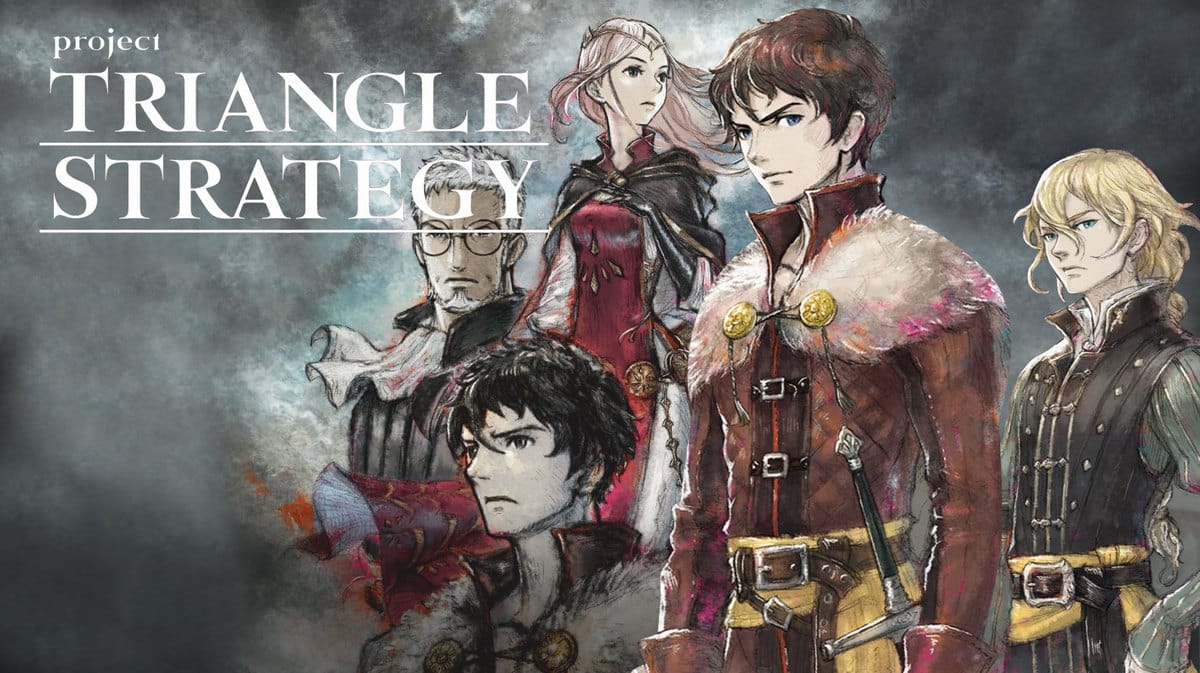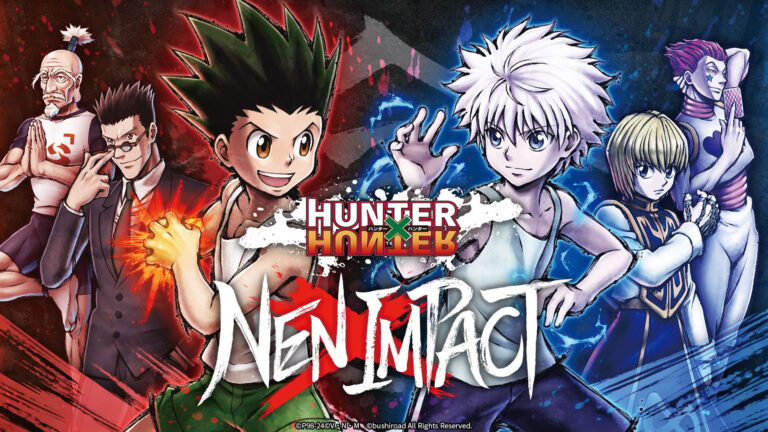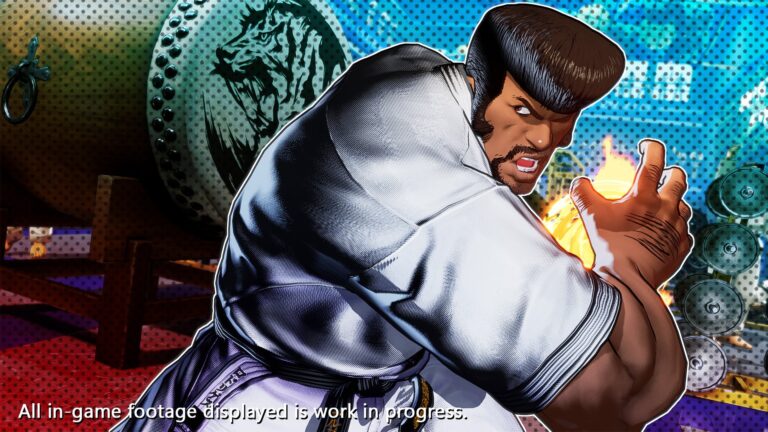The next installment in Square Enix and Nintendo’s HD-2D series, Project Triangle Strategy was a hidden gem in the rather disappointing Nintendo Direct that aired February 17th. Aided in part by the lack of hard-hitting first-party Nintendo announcements, Project Triangle Strategy stood out with its unique aesthetic and interesting premise amidst a swath of other games set to launch soon on the Nintendo Switch.
After getting my hands on the debut demo and really sinking my teeth into what the game offers, here are some key takeaways from Square Enix’s newest tactical RPG. Please note that spoilers for the demo follow.
The Good
Instantly, the first thing any players will notice is the game’s unique presentation. Blending adorable animated sprites with gorgeous three-dimensional background design, Triangle Strategy is a visual treat, standing out against other releases in the strategy role-playing genre.
Then again, this is the same basic style that made Octopath Traveler so memorable when it debuted in 2018. As with that game, the overall effect comes across like an intense rush of nostalgia, but with a modern twist.
However, what good is a game that’s only supported by interesting visuals? As fortune would have it, Triangle Strategy delivers on an equally engaging premise as well.
Players are introduced to the world of Norzelia, where three nations are bound together by a fragile peace. Each country possesses a valuable resource necessary for survival, setting the continent on a precarious equilibrium. The northern realm of Aesfrost controls iron, while production of salt and ownership of vital waterways falls under the jurisdiction of Hyzante and Glenbrook respectively.
The demo mainly focuses on the conflict between Aesfrost and Glenbrook, complete with medieval fantasy political intrigue and warfare. It opts to throw players into the midpoint of the game’s story, where political tensions are at their peak and threaten to tip in any direction.
The player is thrust into the shoes of the young lord Serenoa, heir to House Wolffort and follower of Glenbrook, when the Kingdom of Glenbrook is invaded by the warmongering Duchy of Aesfrost. Thus, they are tasked with safely guiding Serenoa and his motley crew through the trials that await them.
Like any other strategy role-playing game (SRPG), Project Triangle Strategy’s biggest strength lies in its turn-based tactical combat. Operating on a grid-based map, complete with elements like elevation and weather conditions, Triangle Strategy’s tactical gameplay gives players many approaches from which to choose.
Every playable character in the demo operates uniquely, each vying for a spot on the player’s roster. With wildly differing abilities, passives, strengths, and weaknesses, the various units present distinct methods for how they tackle each and every battle.
To give an example, Prince Roland is a high-movement powerhouse, capable of hitting multiple foes in a single turn via his lance or movement passive. Meanwhile, Anna the spy is your typical glass cannon rogue, capable of acting twice per turn and calling upon debilitating status effects. Anna can also turn completely invisible to enemies, so long as they don’t walk right up to her. These are just two of the soldiers that make up your army, which can include elemental mages and flying arches among other intriguing options.
The character ability economy runs on the TP system, with units earning one TP point per turn. In turn, TP points can be used to activate strong attacks and other gimmicks that can turn the battle in your favor.
Unlike Nintendo’s popular Fire Emblem games, Triangle Strategy’s battles are waged in individual turns rather than in player/enemy phases. A unit’s turn priority is determined by their speed statistic, which adds another layer of strategy. It’s clear to us that players who can manage the turn economy and order will prevail.
On top of this, unit positioning plays a major role in combat, with backstabbing and follow-up attacks being key tactics in bringing down tough foes. Sandwiching an enemy between two of their own units allows the player to double team foes with nifty follow up attacks, with backstabs dealing critical damage.
This feature works incredibly well with Prince Roland’s movement passive “Opportune Attack”, which lets him attack an adjacent enemy after having already attacked or moved. This in turn can trigger follow-ups to deal massive damage which only adds to the satisfaction during play.
Another key aspect to the game seems to be the Scales of Conviction, a feature that affects the game as a whole. Triangle Strategy’s story is driven and guided by how the player grapples with the three core values of Morality, Utility, and Liberty. Though it is not fully fleshed out in the demo, the basic idea behind this feature is that player decisions matter.
During pre-battle phases when the player is allowed to roam a set location in preparation, they will be prompted with various dialogue options while talking to characters that determine Serenoa’s disposition and tip these scales. Due to the demo’s short length, we weren’t yet able to see the long-lasting consequences of these options, but thankfully we did get to see game-altering decision making in full force thanks to a pivotal story moment.
After fleeing the mighty Aesforsti forces, Serenoa houses Prince Roland of Glenbrook in Hawksroost, the home of House Wolffort. Threatened with total annihilation by the overwhelming might of the Aesfrost soldiers, Serenoa is faced with the choice of either handing Prince Roland over to appease their new Aesfrosti masters or making a valiant stand against the foreign invaders.
The decision cannot be made by the player alone, though. Rather, it comes down to a vote involving all party members, with the game forecasting what decision each character will make. For instance, it’s made clear that an overwhelming majority of those present want to surrender Roland to the forces of Aesfrost, including Roland himself.
All the characters have their own convictions and reasons behind their vote, and will stand by them should the player fail to persuade them. Based on information that they can find in pre-battle phases, the player can draw upon said intel to aid in their persuasion and future votes, which opens up new dialogue trees between Serenoa and his companions.
The vote’s result has a profound impact on subsequent events, reshaping Norzelia in dramatic fashion however it plays out. Giving up Prince Roland sets off a civil war in Glenbrook, orchestrated by Aesfrost. Refusing to surrender Prince Roland, meanwhile, not only shocks all of Norzelia but also opens the door for new alliances and intrigue going forward.
Suffice to say, I was completely sold on this feature. It is an incredible way to create divergent storylines centering player agency, making each choice a player makes feel like they matter to the wider arc of the narrative. We even get to see smaller side stories across the continent influenced by our past decisions, further emphasizing how important choices are in the long run.
Other choice-based games, such as the various series developed by Telltale Games, gave the impressions of meaningful choice with every dialogue option while only delivering on minimal differences in how a story unfolded. I hope to see just how deep player choices and consequences go when Triangle Strategy releases.
The Not So Good
While Triangle Strategy’s presentation and premise is spectacular, the debut demo falls short in several places.
While the inter-kingdom conflict and medieval drama of Norzelia are interesting, the characters involved are laughably cliched. For a game that is supposed to pivot on difficult decisions and the player’s willingness to commit to them, there isn’t a lot of nuance on display.
The Duchy of Aesfrost are your standard, run-of-the-mill medieval villains with few redeeming qualities. Meanwhile, anyone associated with Serenoa and Roland gets painted as a righteous do-gooder. There isn’t anything wrong with having black-and-white morality exemplified by characters in a story where the plot necessitates it, but in a game that involves making decisions where morality and wider societal impact must be considered, this approach dampens the impact of a decision.
While some nods towards gray morality are splashed here and there amidst player decision-making, there isn’t quite enough to warrant capitulating to the enemy, especially in the small snippet we see in the demo. Why would Serenoa, Roland’s best friend and House Glenbrook’s staunch ally, even consider surrendering him over to Aesfrost after witnessing the deaths and sacrifices of the people who helped them escape Aesfrost’s clutches? Based on what we saw so far, surrendering Roland – the only surviving heir to the Glenbrook throne – to their political enemy would be asinine.
Our hope is that the full release of the game presents multiple perspectives to better flesh out the story and makes each choice feel more nuanced, instead of being hamfisted and designed only to give players a “what-if” scenario. Player choice is great, but having valid reasons behind each choice would make it even better.
Another department Triangle Strategy suffers in is the voice acting. In its best moments the performances are serviceable, but at their worst they become immersion breaking.
Characters have their fair share of well-delivered lines and quotes but most of the demo’s dialogue feels stilted, as though it is being recited straight off the page rather than being memorized and performed with grace. Sereona’s performance especially suffers in this regard, coming off as rough and unnatural. It’s an issue that extends to other characters as well, which dampens the game’s atmosphere and ability to engage the player.
The game pulls us in with its rich lore, strategic depth, and “tough” choices, but can pull us out of the experience in the same breath. Though it may be too late in production, voice direction needs a huge overhaul given how seriously the game takes itself.
Conclusion
Triangle Strategy’s debut demo is brimming with the potential. Its strengths shine bright, leading us to believe that this could be a worthy pickup for any who dabble or are invested in the SRPG genre and choice-heavy games. It has its fair share of rough patches that can dampen the overall experience, but given that this is just a demo for a project still in development, the full game has ample time for improvement.
At the end of the day, we only want what’s best for Triangle Strategy. Hopefully, it can rise to the challenge when it releases sometime in 2022.
No related posts.






